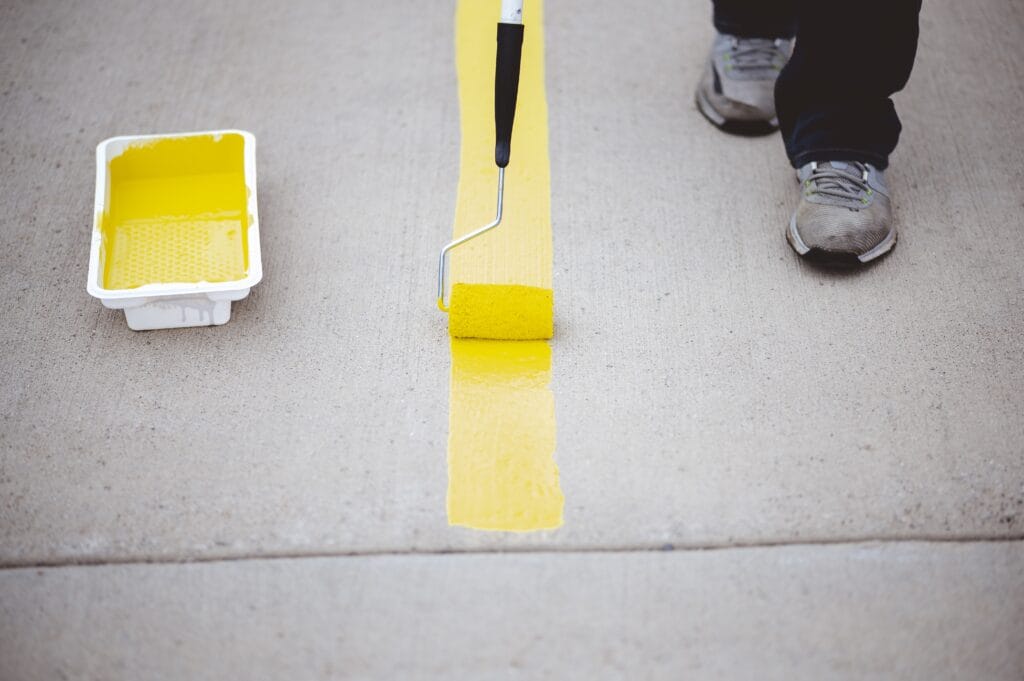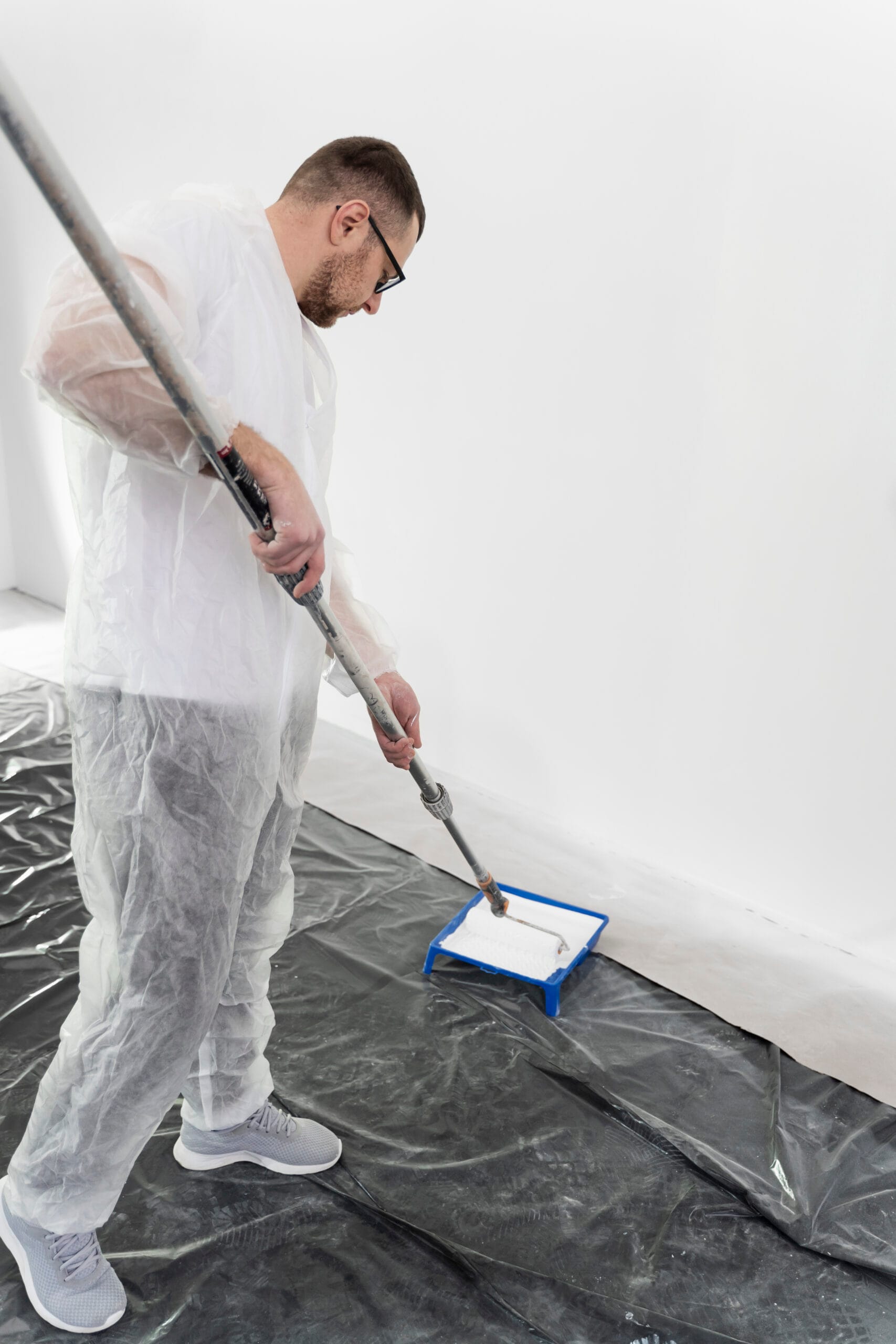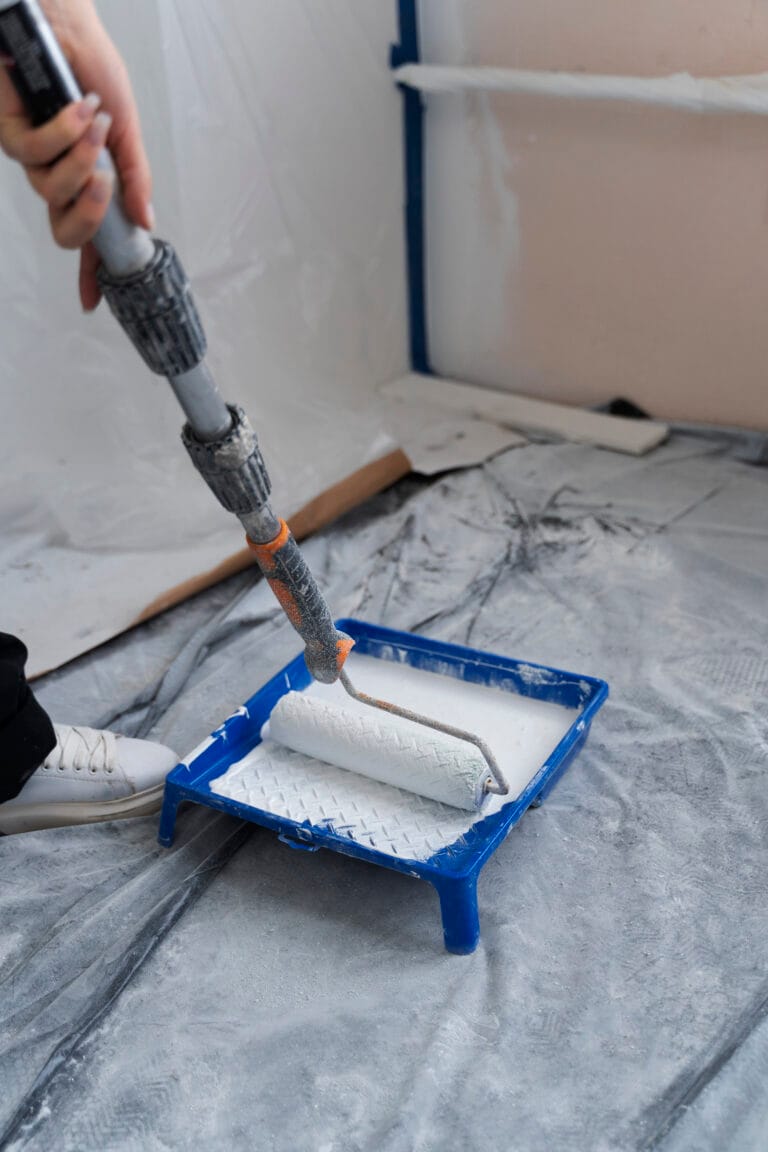- Free Estimates

Painting a garage floor is one of the most practical upgrades for any home or workspace. It not only makes the space look cleaner and more finished but also protects against oil stains, moisture, and daily wear. Whether you’re using basic concrete paint or a more durable epoxy coating, achieving professional-looking results depends on choosing the right products and following each step carefully. From preparation to finishing touches, every stage contributes to how long the coating will last and how good it will look.
Let’s walk through the process of painting a garage floor like a pro.
✔Choose the appropriate garage floor coating and gather all tools and materials before starting
✔ Ensure the floor is clean, dry, and free of damage so the paint sticks properly.
✔ Use a quality primer to improve adhesion and extend the life of the garage floor paint.
✔ Apply the paint evenly with a roller in thin coats, allowing proper drying time between layers.
✔ Add non-slip additives or decorative flakes if desired, then seal the surface for extra durability.
✔ Let the floor cure fully before moving items back in, and clean regularly to maintain the finish.

Start by understanding the available paint types, selecting the right one for your needs, and preparing all necessary tools and materials.
Choosing the Right Paint
Knowing how to pick the right paint depends on the garage’s usage, environment, and desired look. For those new to how to paint a garage floor, keeping it simple and practical helps.
Tools and Supplies Checklist
Having the right tools on hand saves time and keeps the process smooth. This basic list is essential for anyone learning how to paint a garage floor correctly.
Before applying any type of garage floor coating, preparing the surface is the most important step. A clean and smooth floor helps the paint stick better and last longer. This is true whether using epoxy garage floor paint, concrete floor paint, or any other type of garage floor coating.
Cleaning the garage floor removes dirt, oil, and stains that can prevent the paint from bonding properly
Fixing cracks and holes is necessary to create a flat, strong surface before painting the garage floor.
Etching opens the surface of the concrete so the paint or epoxy garage floor paint can soak in and stick better, which is a crucial step in learning how to paint a garage floor for long-lasting results.
Ensure the Floor is Dry
A fully dry floor is key for a strong, long-lasting finish. Moisture trapped under paint can cause blistering or peeling.
Before applying any garage floor coating, adding a primer can make a big difference in how well the paint sticks and how long it lasts. While it’s not always required, using a primer is strongly recommended—especially when working with epoxy garage loor paint or other types of concrete floor paint.
Primers serve multiple purposes during the process of painting a garage floor, especially when the concrete is older, stained, or slightly porous. Understanding its role helps ensure a long-lasting result.
Applying primer the right way is just as important as choosing the right one. Proper application ensures the garage floor coating works as expected and gives a clean, pro-level finish.
Painting transforms a plain concrete floor into a cleaner, more durable surface. Using the right tools and following each step carefully leads to a smooth, long-lasting garage floor coating.
Proper mixing ensures the paint performs as expected. Without it, the finish may fail or peel early.
Applying paint the right way helps avoid patchiness and roller marks. The method matters just as much as the materials.
More than one coat is usually needed for a strong, solid finish. It improves coverage and extends the life of the paint.
Drying and curing times are crucial for durability. Rushing the process can cause the paint to peel or wear out fast.
Once the paint is applied, adding final details can enhance both function and appearance. These optional extras help complete the garage floor coating like a pro.
Smooth floors can get slippery, especially when wet. Anti-slip options improve safety without affecting the overall look
These extras add a polished, high-end finish. They also protect the floor and help hide everyday wear.
After painting a garage floor, proper curing and routine maintenance are key to keeping the finish looking clean and lasting longer. Whether using epoxy garage floor paint, concrete floor paint, or another type of garage floor coating, skipping these steps can lead to early damage.
Typical Cure Times for Garage Floors
Different products have different drying and curing times. Knowing what to expect helps prevent damage before the coating is ready.
Maintenance doesn’t have to be complicated, but there are specific methods that work best.
Protecting the Floor From Wear and Tear
Some simple actions can go a long way in keeping the painted surface in great condition.
Painting a garage floor is a smart way to protect the concrete and improve the overall look of the space. It makes the floor easier to clean, reduces dust, and adds resistance to stains and chemicals. A painted floor also reflects more light, making the garage feel brighter. It’s a practical upgrade for both function and appearance.
The best options are epoxy garage floor paint, acrylic, or polyurethane coatings. Epoxy is the most durable and ideal for high-traffic garages. Acrylic is easier to apply but not as tough. Always use paint made specifically for concrete surfaces.
Yes, pressure washing is recommended to remove dirt, grease, and old coatings from the concrete. A clean surface helps the paint stick better and last longer. It also exposes any cracks that may need repairs. Skipping this step can lead to peeling or uneven results.
Sealing is not always required, but it can be helpful depending on the condition of the floor and the paint used. A primer or sealer can improve paint adhesion and block moisture. Some epoxy systems include a built-in primer. Always follow the product instructions.
One downside is that painted concrete can chip or peel over time if not prepped correctly. It may also become slippery when wet unless a non-slip additive is used. Maintenance is needed to keep it looking fresh. Moisture issues under the slab can also cause problems.

Painting a garage floor takes time, the right materials, and solid preparation. For property owners in Fairfield, CT, looking for a smooth, long-lasting finish, Fairfield Painting Contractors offers expert services tailored to garage floor coating, including epoxy options and durable concrete floor paint. Each job is handled with care, ensuring the floor is cleaned, repaired, and finished to professional standards.
Reach out to Fairfield Painting Contractors today and schedule garage floor painting in Fairfield, CT with trusted local experts!